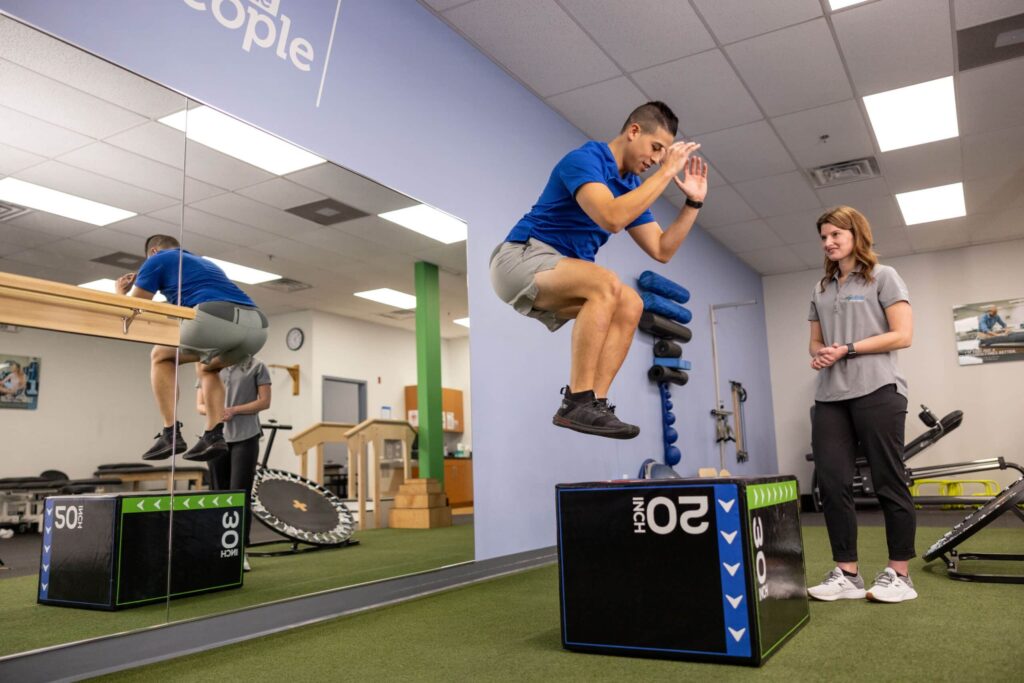Sports and physical activities are essential for a healthy lifestyle. They not only keep us physically fit but also mentally active and engaged. However, sometimes the very activities meant to keep us healthy can lead to injuries. Thankfully, physical therapy exists as a powerful tool to help athletes and enthusiasts alike recover from these injuries and get back in the game.
Let’s dive into five common sports injuries and explore how physical therapy can help with each:
- Sprained Ankle
- Description: A sprained ankle occurs when the ligaments that support the ankle stretch beyond their limits or tear. This is common in sports that involve jumping, pivoting, or a sudden change in direction, like basketball or soccer.
- Physical Therapy Solutions: A trained physical therapist can offer exercises to restore range of motion, improve strength, and enhance proprioception (the ability to sense the position and movement of our body parts). Manual therapy, modalities like ultrasound or electrical stimulation, and tailored home exercise programs can speed up the recovery process.
- Tennis or Golfer’s Elbow
- Description: Medically known as lateral epicondylitis (tennis elbow) and medial epicondylitis (golfer’s elbow), these injuries involve inflammation of the tendons that connect the forearm muscles to the elbow. Repetitive wrist and arm motions, like those in tennis and golf, can lead to these conditions.
- Physical Therapy Solutions: Physical therapists can employ techniques like deep tissue massage, stretching exercises, and strengthening exercises to relieve symptoms. They might also advise on proper technique and equipment modifications to prevent further injuries.
- Hamstring Strain
- Description: The hamstring, located at the back of your thigh, can be strained or torn during activities that involve sudden accelerations or decelerations, like sprinting. This injury is often accompanied by a sharp pain in the back of the thigh.
- Physical Therapy Solutions: Early intervention typically includes rest, ice, compression, and elevation. As recovery progresses, physical therapy can introduce gentle stretching exercises followed by strengthening exercises to restore muscle balance and flexibility. Functional training can ensure a safe return to sports.
- Rotator Cuff Tear
- Description: The rotator cuff is a group of muscles and tendons surrounding the shoulder joint. A tear can result from either a sudden injury or repetitive overhead motions, common in sports like baseball or swimming.
- Physical Therapy Solutions: Conservative management via physical therapy focuses on restoring shoulder strength and flexibility. Range-of-motion exercises, strengthening exercises targeting the shoulder muscles, and postural education can be beneficial. If surgery is needed, physical therapy also plays a pivotal role in post-operative rehabilitation.
- ACL Tear
- Description: The Anterior Cruciate Ligament (ACL) is one of the primary ligaments in the knee. An ACL tear can happen from sudden stops, changes in direction, or direct collisions, frequently seen in sports like football or skiing.
- Physical Therapy Solutions: Pre-surgery and post-surgery, physical therapy is crucial. Pre-surgery (prehab) focuses on reducing pain and swelling and maintaining as much strength and range of motion as possible. Post-surgery rehab aims to restore full knee function, including strength, range of motion, and balance.
Conclusion:
While injuries can be disheartening, the silver lining is the potential for recovery, often with the aid of physical therapy. Physical therapists in Houston bring a wealth of knowledge and experience to helping individuals navigate their recovery journey, ensuring they can return to the sports and activities they love safely and confidently.
Remember, while the information provided here is beneficial, it’s essential to consult with a professional regarding any injury. Physical therapists can provide tailored advice and interventions based on individual circumstances. So, if you or someone you know is facing a sports-related injury, don’t hesitate to reach out to a qualified physical therapist.
Revolve Physical Therapy

